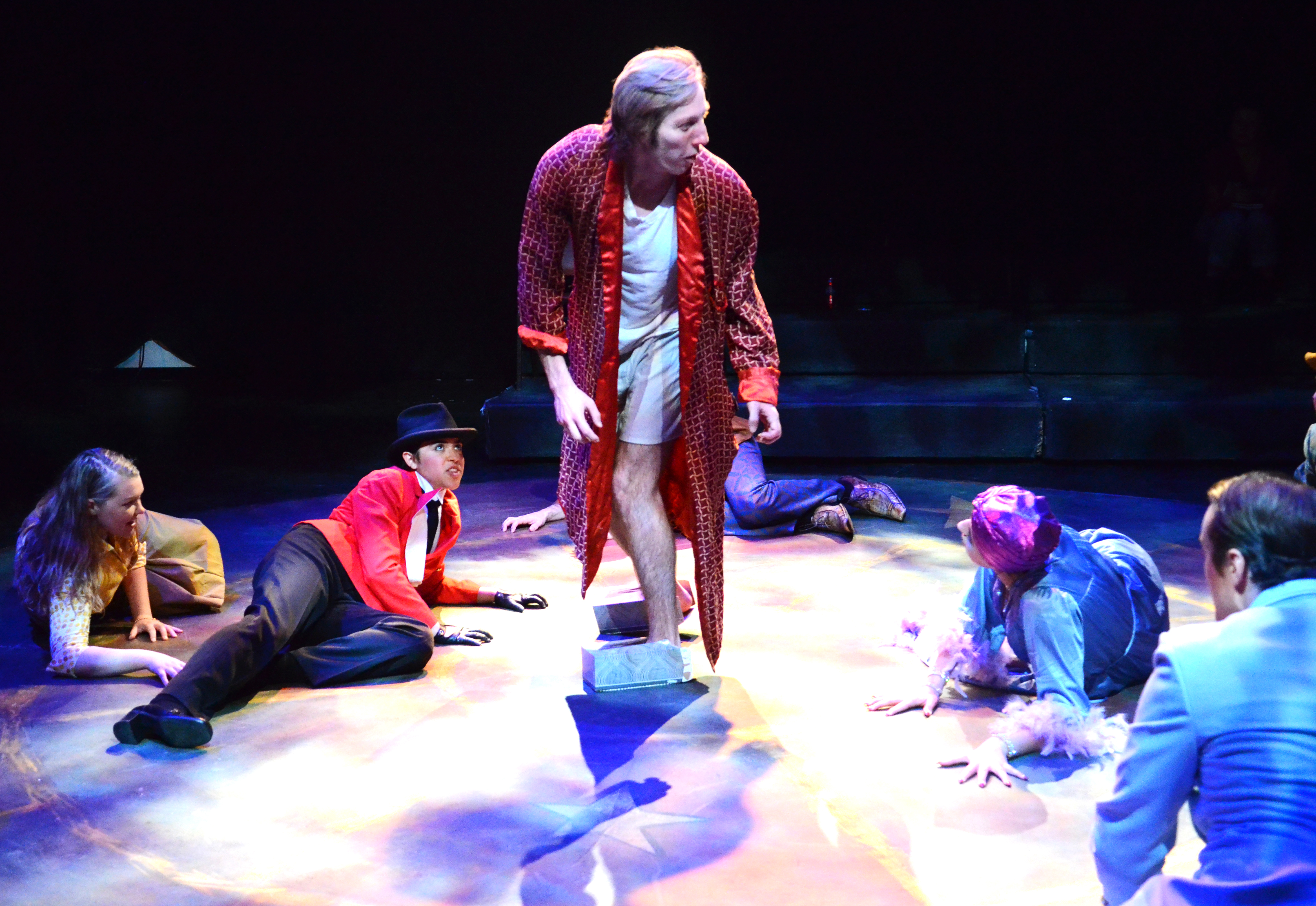“˜Neon Boneyard’ kicks off UCLA’s New Play Festival

Performers practice for the play “Neon Boneyard” written by screenwriter Tyler McClain. This and two other plays will be part of the The New Play Festival written by playwrights from UCLA’s master of fine arts program and will be showcased at Macgowan Hall starting today.
The New Play Festival
Thursday 11/15 through Saturday 11/17, 8pm
Macgowen Hall 1340, FREE
By Karli Komoto
Nov. 14, 2012 11:35 p.m.

“Neon Boneyard” is one of the works featured in The New Play Festival at Macgowan Hall this weekend, put on by UCLA’s master of fine arts playwright program. The piece is the anti-“Hangover,” taking the audience into Las Vegas’ economic and social devastation.
Forget about money, sex and alcohol. This trip to Sin City abandons the raging nightlife and drops tourists into the center of Las Vegas’ social and economic devastation. For UCLA master of fine arts playwright Tyler McClain, this theater production does not just expose the city’s deceptive façade. Its story line is inspired by the destruction McClain experienced firsthand.
McClain’s “Neon Boneyard” is one of three plays that will be showcased at UCLA’s New Play Festival, put on by the MFA program, starting today. This year, the festival will abandon its usual table read format, where actors perform staged readings of playwrights’ works, and instead feature them in full productions.
“Neon Boneyard” is set in Las Vegas and follows the main character, Howard Hughes, as his success deteriorates and he is left to die alone. Not only is this festival a platform where McClain can present his work, but it is also an outlet where he can reflect on his livelihood and use his personal experiences as a former resident of Las Vegas to inspire his play.
Unlike the crowds of people swarming down the Strip, for McClain, Las Vegas is not a place for partying or drinking.
“For me, I grew up there and it’s a depressing place. It’s an economy that is built off the backs of single moms and addiction,” McClain said.
The surreal world that McClain has created becomes Hughes’ place of self-destruction. Audience members can anticipate seeing an alternative side of Vegas, a side that does not glamorize substance addiction and abuse.
“The world he has created is coming from a place of knowledge,” said third-year theater student Taylor Patterson, an actor in McClain’s production. “It’s huge and grotesque, and neon and (has) bright colors. It’s saturated. It’s over-stimulated.”
Undergraduate actors like Patterson and fourth-year theater student Lanelle Chávez said they have benefited from having their playwright in rehearsals with them. When questions of the text’s symbolism arise, McClain is there to help.
“First he’ll ask me what I think about it and then he’ll say, “˜Yeah, that’s right,’ and, “˜I also think about it this way.’ So really, it’s a collaboration,” Chávez said.
Chávez said that every actor interprets his or her character differently. In period plays like Shakespeare’s, actors speak with people who study the playwright, but the actors in “Neon Boneyard” have the luxury of speaking directly with McClain when they have a question. McClain said his actors are bringing the characters to life in ways that he never thought of, but nonetheless are better than he imagined.
“The coolest part of doing something creative for collaboration is when you hand off your portion … you can see other people process it through a kaleidoscope of their imagination,” McClain said.
Chávez said it is great working with McClain because she never misinterprets his suggestions as criticism. His feedback prompts discussions of her role.
Chávez’s role as a card shark in Las Vegas has gone through major renovations from the original casting. On the first day of rehearsal, Chávez was told her part was going to be rewritten. Her monologue has been greatly extended and she said she sees herself as a catalyst of Hughes’ downward spiral. Since then, she has been able to sit down with McClain and director, Roxie Perkins, to discuss her character’s objectives.
“(McClain has) really helped me figure out the angle that this character is coming from. I pull the last straw of (Howard Hughes’) psyche and push him to his limits,” said Chávez.
Although the process of collaboration is mutually beneficial for playwrights and actors, it does not mean the task is always easy, McClain said. Since “Neon Boneyard” is inspired by McClain’s experiences, discussing the complexity of Howard Hughes’ world can mean disclosing McClain’s personal beliefs.
“Collaboration is scary, because it’s a degree of vulnerability that I’m not used to,” he said.
McClain is not alone. “Neon Boneyard” is made almost entirely of monologues ““ leaving the actors to command the stage alone.
“Without another person to bounce off of, you really have to create a world for yourself. I’m having to flex muscles I never knew I had,” Patterson said.
For “Neon Boneyard,” the lack of dialogue and traditional staging may surprise the audience. During the play, the entire cast remains onstage as a chorus verbally responds to the lead’s monologue and physically shifts to create images for the lead to interact with.
With the constantly evolving chorus, visual stimulation and lack of dialogue between characters, “Neon Boneyard” has not taken a straightforward approach to theater, McClain said. The other details of the production are left to a mystery.
“Whatever the audience thinks they’re going to see, they won’t see ““ but in the best way possible,” Patterson said.


